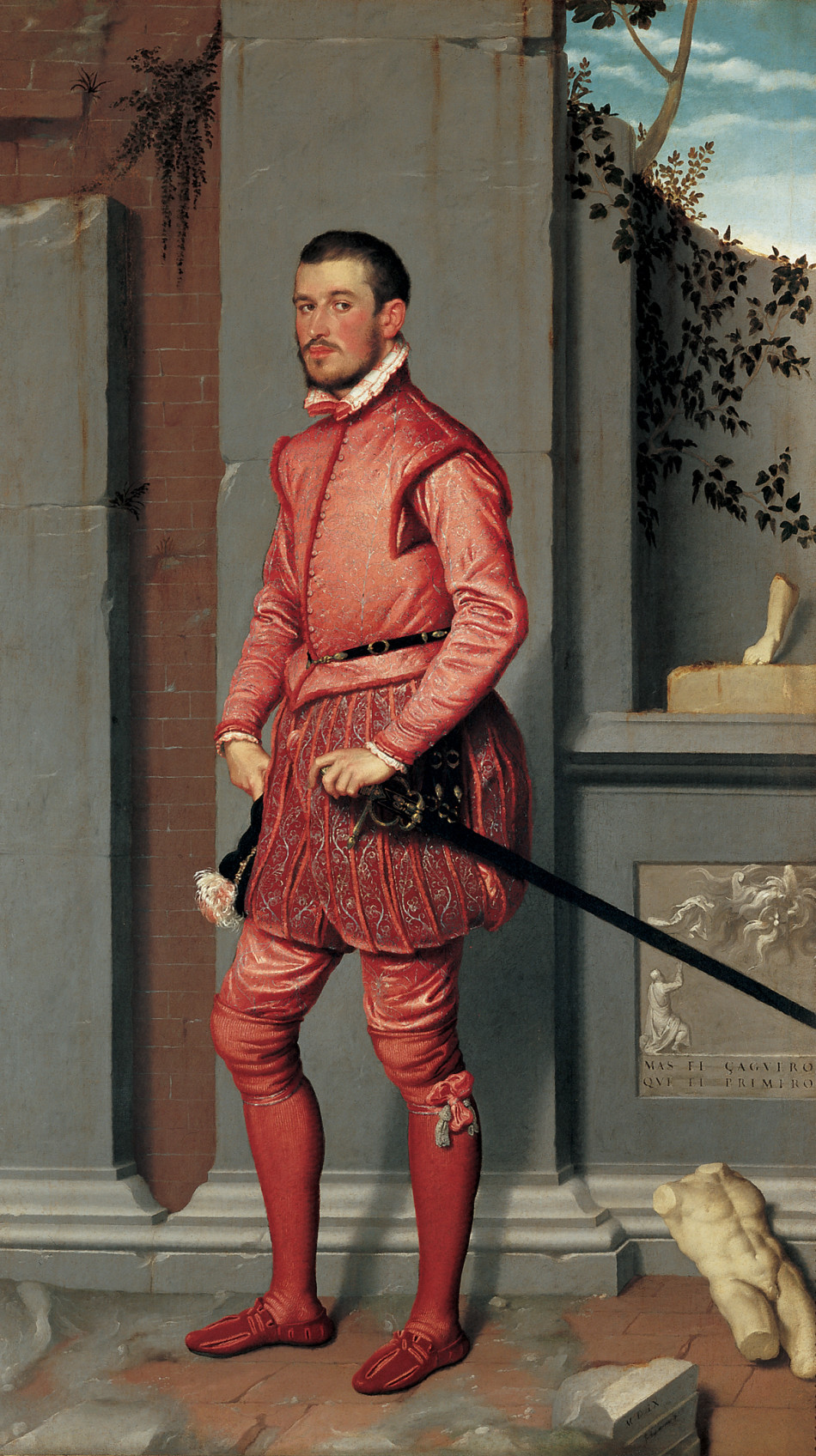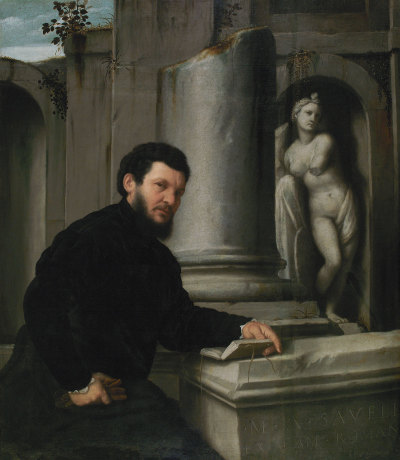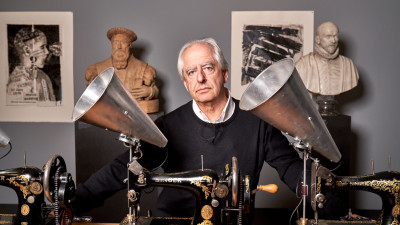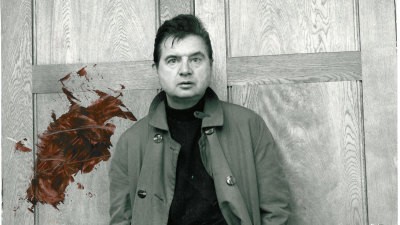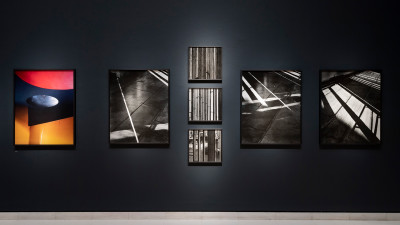Why Moroni should be as famous as Titian
By James Hall
Published 17 November 2014
As visitors to the RA discover the work of Giovanni Battista Moroni, James Hall looks at the particular genius of this overlooked Renaissance portraitist – and why he lost out to the likes of Titian.
-
Of the great portrait painters, Giovanni Battista Moroni (c.1520-c1580) is the master of fragile perfection. Right from the start, when he emerged from the studio of his master Moretto, the so-called “Raphael of Brescia”, he developed a new type of portraiture in which stylishness brushes up against decay, poise against imperfection. He poses elegantly dressed men in their prime against mottled grey backcloths of ruined classical architecture, subject to picturesque invasion by ivy and weeds. His patrons try to keep their exquisite cool even amidst fallen fragments of building and antique sculpture, and surrounded by grey marble and Italian sandstone walls that are not only chipped, but weeping and bleeding streams of oxidised iron (see portrait of Gian Gerolamo Grumelli, below).
-

Giovanni Battista Moroni, Gian Gerolamo Grumelli, c. 1560.
Oil on canvas. 216 x 123 cm. Fondazione Museo di Palazzo Moroni - Lucretia Moroni Collection, Bergamo. Photo Lucretia Moroni Collection, Fondazione Museo di Palazzo Moroni. Photography: Marco Mazzoleni.
-
Moroni lived and worked in three cities of northern Italy – Bergamo, Albino and Brescia – that were located in the southern foothills of the Alps. These cities were continually being fought over by the two great regional powers: the Spanish-controlled Milan to the west, and Venice to the east. Several of his patrons were involved in murderous family feuds fought between pro-Venetian and pro-Spanish factions. Moroni’s inimitable style was forged in this unique cultural crucible, and his uniqueness and “provincial” location has often led to him being ludicrously undervalued – rather like those other masters of restrained emotion, Piero della Francesca and Vermeer. It is only in the Victorian period and the last forty years that he has been recognised as one of the greatest portrait painters of his age.
Spanish portraiture in Moroni’s time was dominated by Titian, who was court painter to the Hapsburg Emperor Charles V. The Hapsburgs were the most powerful family in Europe and because they ruled the so-called Spanish Netherlands, court portraiture was also influenced by Northern styles. Titian’s successor as court painter was Anthonis Mor from Utrecht in the Netherlands, who was steeped in the naturalism of Holbein, Memling and Van Eyck. Moroni brilliantly combines the atmospherics and poetic reverie of Venetian portraiture with the unerring naturalism of Holbein.
-
Moroni's uniqueness and “provincial” location often led to him being ludicrously undervalued
-
Vasari said of Michelangelo’s astonishingly refined chalk presentation drawings of the 1530s that they seemed to have been breathed into existence, such was their hazy delicacy and unity, and the same could be said of Moroni’s paintings, with their precarious precision of tone and harmony. His subtle mastery is especially mesmerising in his bust length portraits of men, women and children.
One of the striking features of Moroni’s portraits is large number of his sitters who hold books, or who are juxtaposed with thought-provoking inscriptions, which immediately establishes a solitary reflective mood. He moved in highly cultured circles, and his sitters wanted to advertise their intellect as well as their wealth and power. A member of the Roman Savelli family, dressed in fashionable spanish black, leans on a column base located in front of another decapitated column, and uses it as a prop for his open book (see portrait below, bottom right). Lurking behind the column is an armless statue of Venus. The position of Savelli’s head matches that of Venus, and suggests he is reading tortured Petrarchan love poetry rather than a religious text (Moroni also inserted striking portraits of patrons into altarpieces).
Petrarch’s sonnets to his beloved Laura were the most popular poems in Europe. Two of Moroni’s female sitters were noted Petrarchan poets, and the portrait of the husband of Lucia Avogadro, whom Moroni portrayed inscrutably holding a fan, is a masterpiece of refined Petrarchan suffering. Faustino Avogadro stands with brittle diffidence before a crumbling wall, dressed in black and silver-grey and surrounded by the parade armour he would have worn for chivalric tournaments. He wears a foot brace on his left foot, and although this is usually said to be the result of some congenital deformity, it must surely be chivalric costume, and would refer to the Petrarchan topos that love makes the thwarted lover lame in the left leg – the left side being the heart side. Avogadro’s fate was anything but Petrarchan – after murderous feuding, he went into exile and died after falling into a well while drunk. It would be nice to think that the casually discarded armour refers to a careless streak in his character.
James Hall’s The Self-Portrait: a Cultural History (T&H) has been shortlisted for the Apollo Book of the Year and the Art Book Prize. Giovanni Battista Moroni is at the Royal Academy of Arts to 25 January 2015
-
Gallery

Giovanni Battista Moroni, Portrait of a Gentleman and His Two Daughters, c. 1572-75.

Giovanni Battista Moroni, Portrait of an Elderly Man Seated with a Book (Pietro Spini?), c.1575-79.

Giovanni Battista Moroni, Prospero Alessandri, c. 1560.

Giovanni Battista Moroni, The Tailor, c.1570.

Giovanni Battista Moroni, Portrait of a Young Lady, c. 1575.

Giovanni Battista Moroni, Portrait of M. A. Savelli, c. 1545-48.
